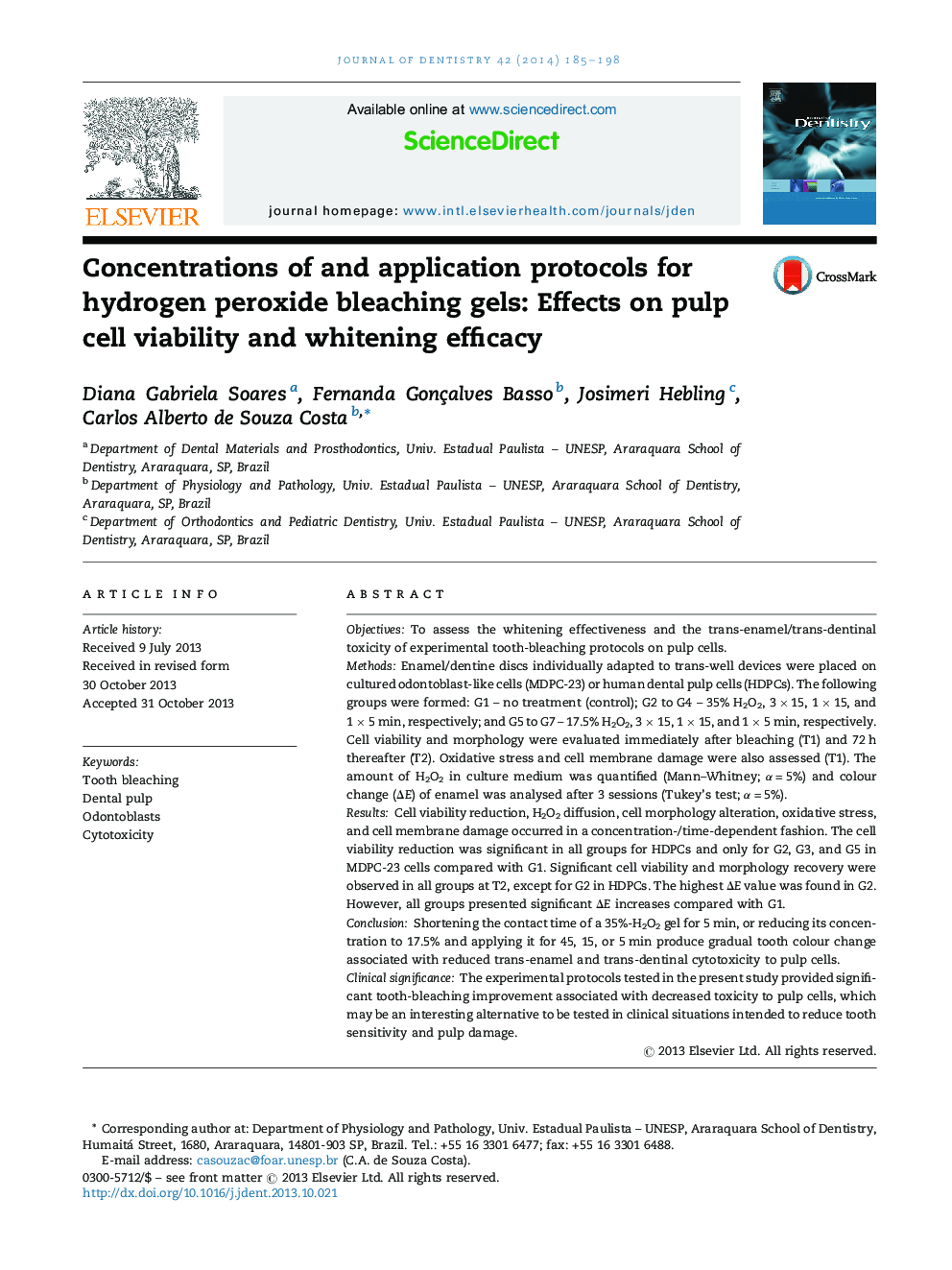| کد مقاله | کد نشریه | سال انتشار | مقاله انگلیسی | نسخه تمام متن |
|---|---|---|---|---|
| 3145520 | 1197081 | 2014 | 14 صفحه PDF | دانلود رایگان |
ObjectivesTo assess the whitening effectiveness and the trans-enamel/trans-dentinal toxicity of experimental tooth-bleaching protocols on pulp cells.MethodsEnamel/dentine discs individually adapted to trans-well devices were placed on cultured odontoblast-like cells (MDPC-23) or human dental pulp cells (HDPCs). The following groups were formed: G1 – no treatment (control); G2 to G4 – 35% H2O2, 3 × 15, 1 × 15, and 1 × 5 min, respectively; and G5 to G7 – 17.5% H2O2, 3 × 15, 1 × 15, and 1 × 5 min, respectively. Cell viability and morphology were evaluated immediately after bleaching (T1) and 72 h thereafter (T2). Oxidative stress and cell membrane damage were also assessed (T1). The amount of H2O2 in culture medium was quantified (Mann–Whitney; α = 5%) and colour change (ΔE) of enamel was analysed after 3 sessions (Tukey's test; α = 5%).ResultsCell viability reduction, H2O2 diffusion, cell morphology alteration, oxidative stress, and cell membrane damage occurred in a concentration-/time-dependent fashion. The cell viability reduction was significant in all groups for HDPCs and only for G2, G3, and G5 in MDPC-23 cells compared with G1. Significant cell viability and morphology recovery were observed in all groups at T2, except for G2 in HDPCs. The highest ΔE value was found in G2. However, all groups presented significant ΔE increases compared with G1.ConclusionShortening the contact time of a 35%-H2O2 gel for 5 min, or reducing its concentration to 17.5% and applying it for 45, 15, or 5 min produce gradual tooth colour change associated with reduced trans-enamel and trans-dentinal cytotoxicity to pulp cells.Clinical significanceThe experimental protocols tested in the present study provided significant tooth-bleaching improvement associated with decreased toxicity to pulp cells, which may be an interesting alternative to be tested in clinical situations intended to reduce tooth sensitivity and pulp damage.
Journal: Journal of Dentistry - Volume 42, Issue 2, February 2014, Pages 185–198
